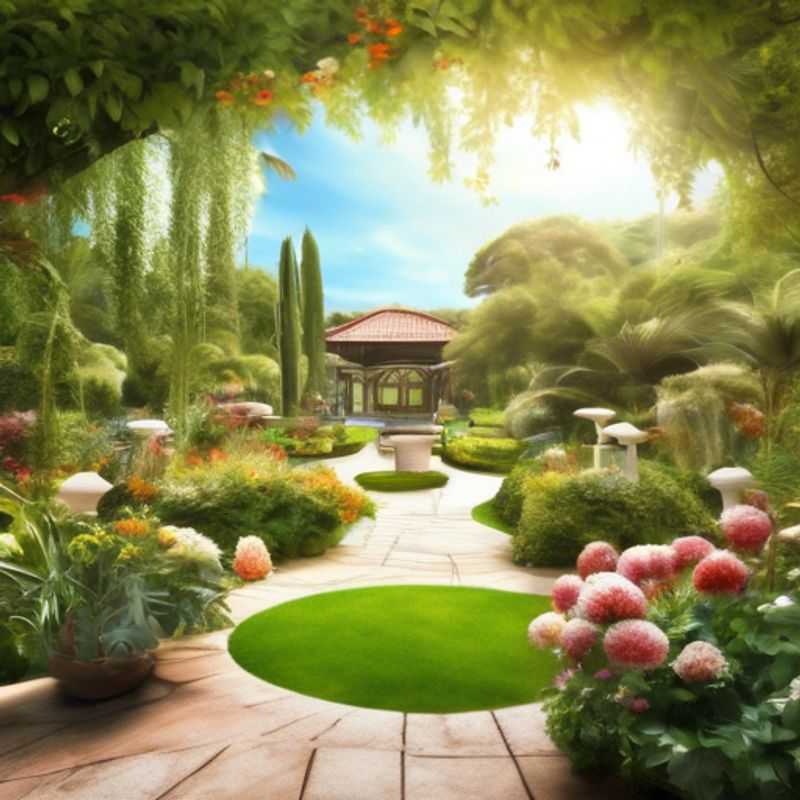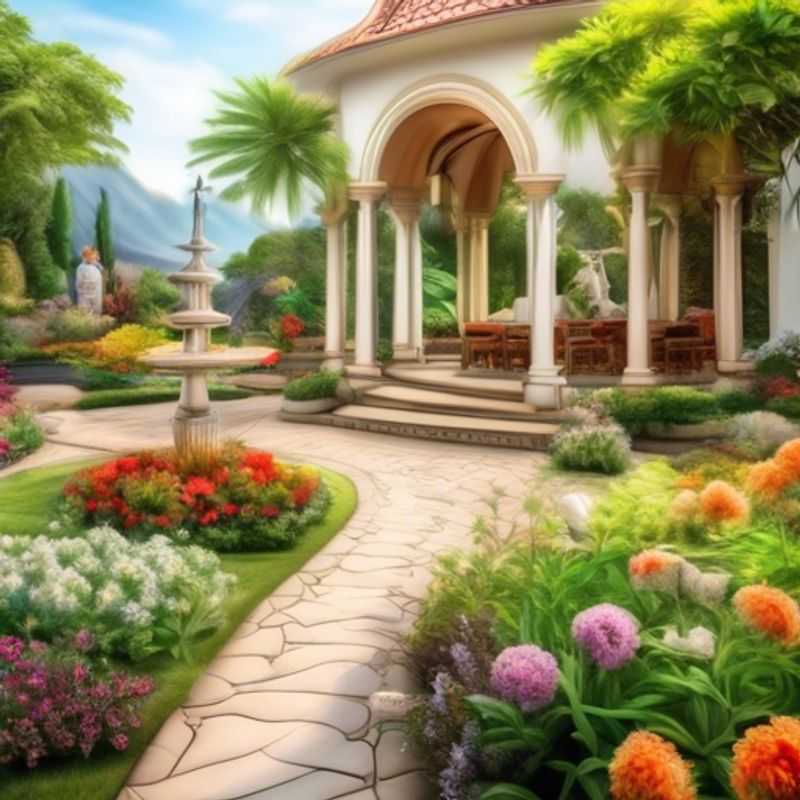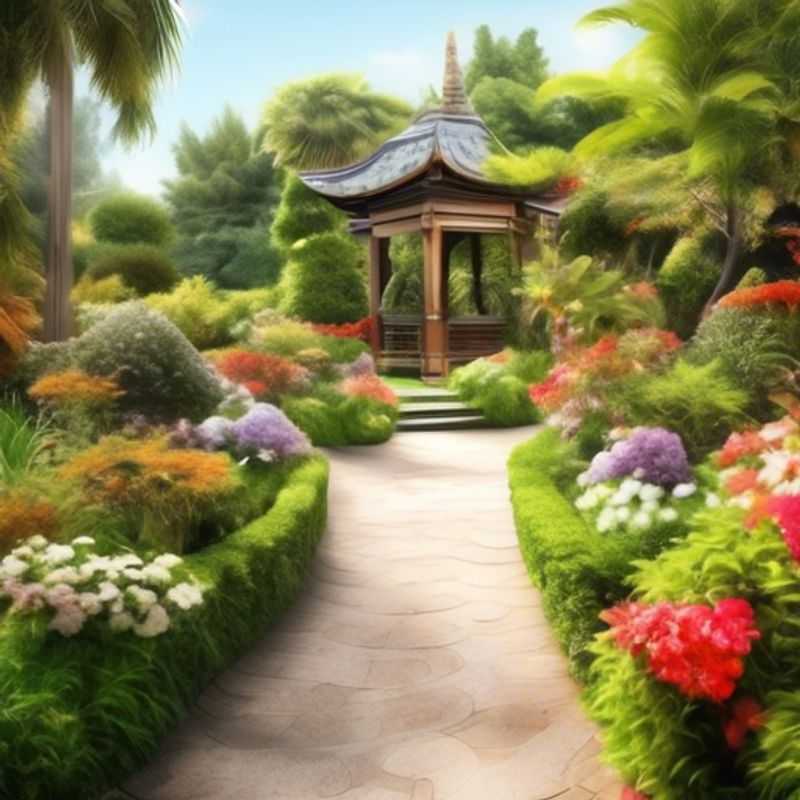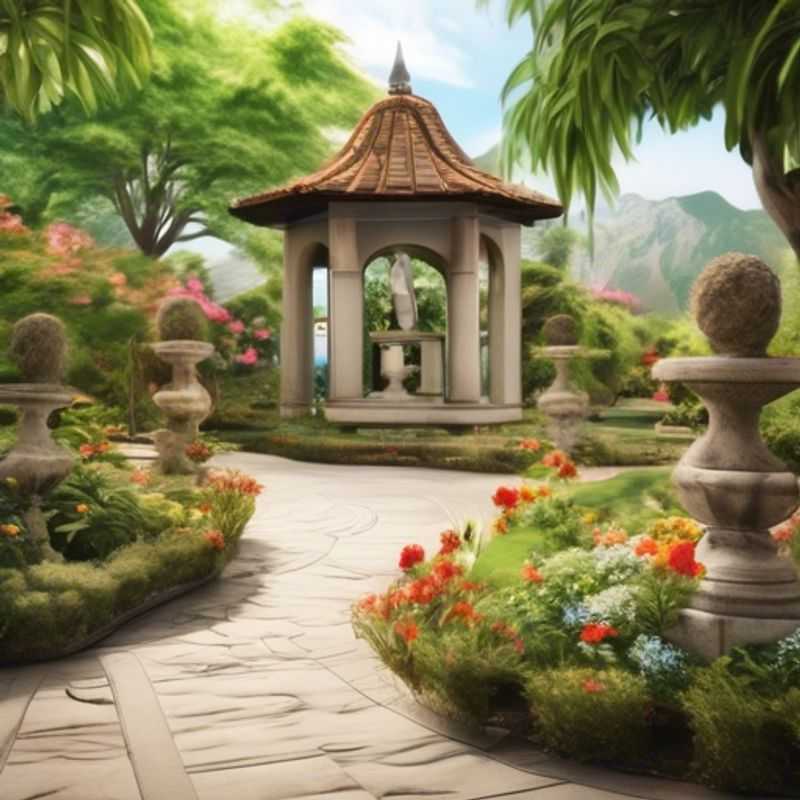Top Things to Know Before Buying Art In The Garden

Top Things to Know Before Buying Art in the Garden: Climate, Materials, Size, Theme, Artists, Installation, Maintenance
Ready to elevate your garden's beauty with stunning art? It's an exciting journey, but a little preparation goes a long way. Here are some key things to consider before you make your selection:
Consider the climate and weather conditions in your garden when selecting artwork.

Choosing Garden Art: Matching Your Artwork to the Climate
Choosing the right artwork for your garden is an important decision. Consider the climate and weather conditions in your garden before you buy any artwork. This will help you select pieces that will last and look their best for years to come.
For example, if you live in an area with lots of rain and humidity, you'll want to choose artwork that is made of weather-resistant materials. Metal, stone, and ceramic are good choices. If you live in a dry climate, you may want to choose artwork made of wood, as it can be more susceptible to cracking and warping. Don't forget about the sun! Some materials, such as wood, can fade in the sun. If you plan to hang artwork in a sunny spot, choose materials that are known for their fade resistance, such as acrylics.
You should also think about the size and scale of the artwork you choose. A small piece of artwork may get lost in a large garden, while a large piece of artwork may overwhelm a small garden. It's important to choose artwork that complements the scale of your garden.

Weatherproof Your Projects: Choosing Materials for Outdoor Durability
When selecting materials for outdoor projects, it's crucial to prioritize those that can withstand the elements. Weather resistance is a key consideration. Look for materials that are resistant to rain, sun, and wind. Rain can cause damage through water penetration, while prolonged exposure to sunlight can lead to fading and degradation. Wind can also cause physical damage, especially to structures and materials with loose components.
Here are some of the most important factors to consider when looking for materials for outdoor projects:
Durability: Choose materials that can withstand the harsh outdoor environment without cracking, warping, or rotting. Water Resistance: Opt for materials that are waterproof or water-resistant to minimize damage from rain and moisture. UV Resistance: Select materials that are resistant to UV radiation, which can cause fading and degradation over time. Wind Resistance: Ensure materials are secure and can withstand strong winds without being blown away or damaged. Maintenance: Choose materials that are easy to maintain, such as cleaning, repainting, or sealing.
Understanding these factors will help you make informed decisions when choosing materials for outdoor projects and ensure the longevity of your construction.

Measure Up: Choosing the Right Size Artwork for Your Garden
Choosing the right artwork for your garden can really enhance the overall aesthetic and atmosphere. One important factor to consider is the size of the artwork in relation to the available space. To make an informed decision, measure the area where you plan to place the artwork. This can be a wall, a fence, or even a freestanding structure.
For wall-mounted artwork, measure the height and width of the wall section you're considering. For freestanding pieces, measure the available ground space. Keep in mind the surrounding elements, such as plants, pathways, and other garden features. Balance and proportion are crucial for achieving a harmonious look.
Once you have the measurements, consider the scale of the artwork you're interested in. It should be large enough to be appreciated from a distance, but not so large that it overwhelms the space. Use a tape measure to visualize the artwork's dimensions in the intended location. You can also sketch the artwork's outline on the wall or ground to help you visualize its final placement.
Remember, there are no hard and fast rules when it comes to choosing artwork size. It's ultimately a matter of personal preference and what looks best in your garden. But taking the time to measure the space and consider the scale of the artwork will help you make an informed decision and create a visually appealing outdoor space.

Choosing a Garden Theme: A Guide to Harmonious Harmony
Deciding on a theme or style for your garden is like choosing the perfect outfit for a special occasion. It sets the tone for the entire space and influences your design choices. To make it easier, think about your home's architecture and how it blends with the surrounding landscape. Consider the style of your home – if it's a classic Victorian, a cottage garden might fit right in. A modern, minimalist home might inspire a sleek, contemporary garden.
Once you have a general idea, dive into the world of garden styles. Do you love the romance of a cottage garden filled with soft blooms and rambling roses? Or perhaps the structured formality of a French parterre garden? Maybe you're drawn to the vibrant colors and textures of a tropical garden or the calming simplicity of a Japanese zen garden.
Once you’ve chosen your style, consider practical aspects like your climate, soil type, and the amount of sunlight your garden receives. These will help you select plants that thrive in your specific conditions. Remember, your garden should be a reflection of your personal style and preferences – let your creativity blossom!

Unleash Your Garden's Creativity: Finding Unique Art with Local Artists and Galleries
Looking for unique and high-quality garden art? Local artists and galleries are excellent resources!
You can find a wide range of styles, from traditional sculptures to modern installations, all created by talented local artists. Take advantage of their expertise - they can help you choose pieces that complement your garden's style and size. You'll also be supporting local artists and adding a unique touch to your outdoor space.
Many galleries offer online catalogs, making it easy to browse their collections before visiting. Consider attending local art festivals, which often showcase a wide variety of garden art and offer the chance to meet the artists directly.
When planning a visit, make sure to check the gallery's hours and any entrance fees, as there might be small admission costs for special exhibitions or events.

Hang it Right: Factoring in Installation and Secure Mounting for Your Artwork
When installing artwork, it's crucial to consider installation requirements and ensure it's securely mounted. This helps prevent damage to your artwork and potential accidents. Here are some key things to keep in mind:
First, assess the weight of the artwork: A heavy piece will require stronger mounting solutions. Consider the wall material, as different materials have varying weight-bearing capacities. Consult an expert if you are unsure.
Secondly, evaluate the artwork's size and shape: Larger or oddly shaped pieces might need additional support or specialized mounting methods.
Thirdly, consider the desired placement: Some artworks might need to be positioned at specific heights or angles. Ensure you choose the appropriate hardware and installation method for optimal aesthetic and safety.
Fourth, choose the right mounting materials: There are various options, including hooks, nails, picture wire, D-rings, and specialized wall mounts. The choice depends on the weight, size, and type of artwork.
Finally, ensure the artwork is securely attached: Test the mounting by gently pulling on the artwork to ensure it's stable. Consider using a level to ensure it hangs straight.
For detailed information on specific installation techniques and materials, consult with a professional installer or refer to online resources. Remember, proper installation ensures the longevity and safety of your cherished artwork.

Low-Maintenance Garden Art: Easy to Clean, Beautiful to Behold
When it comes to garden art, low-maintenance and easy-to-clean options are key for a hassle-free experience. Here are a few ideas to consider:
Metal Sculptures: Stainless steel, aluminum, and copper are durable and weather-resistant. They often require minimal upkeep beyond occasional dusting or wiping. Look for designs with smooth surfaces for easier cleaning.
Stone or Rock Sculptures: Natural stone is incredibly durable and weather-resistant. While it might need an occasional rinse, it's generally low-maintenance. Consider using a sealant to prevent staining and make cleaning easier.
Ceramic or Terracotta: Glazed ceramic or terracotta pieces are relatively low-maintenance and can withstand weather conditions. Regular cleaning with mild soap and water is usually sufficient. However, be aware that unglazed terracotta might be more porous and prone to staining.
Glass Art: Glass sculptures can add a touch of elegance to your garden. Choose tempered or laminated glass for added durability. Regular dusting and occasional washing with mild soap and water are all that's usually needed.
Resin or Plastic Art: Resin and plastic are lightweight and typically low-maintenance. They are generally weather-resistant and easy to clean with mild soap and water. Be mindful of fading or discoloration over time, especially in direct sunlight.
When choosing your garden art, keep in mind the specific materials and their properties. Consider the climate and how much maintenance you're willing to put in. Remember, a little planning can go a long way in ensuring your garden art remains beautiful and functional for years to come.
